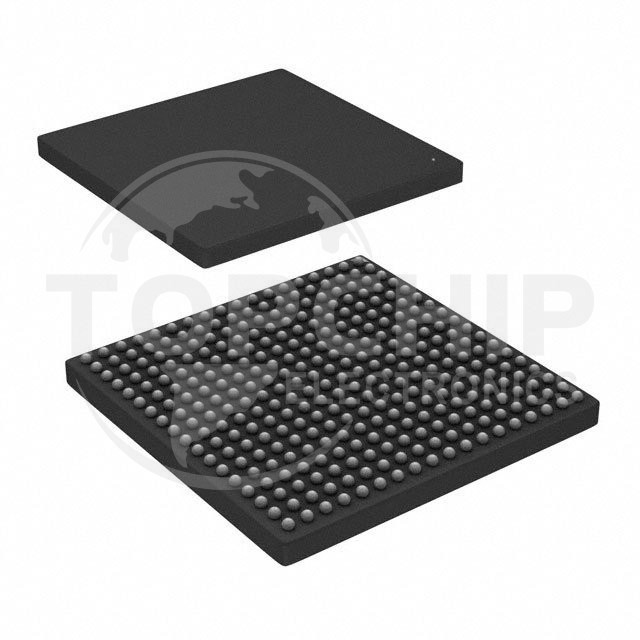Programmable logic device is an important digital circuit device that can process and control digital signals. With the continuous development of digital circuit technology, programmable logic devices are also constantly innovating and developing. This article will explore the development trends and innovations of programmable logic devices from three aspects: the historical development, current situation and future trends of programmable logic devices. (This article is written by TOPCHIP ELECTRONICS Andy).

The historical development of programmable logic devices
The history of programmable logic devices can be traced back to the early 1970s. At that time, people used fixed-function gates to build digital circuit systems. However, this method has problems such as complex design and high cost. In order to solve these problems, people began to study programmable logic devices.
The earliest programmable logic devices are PAL (Programmable Array Logic) and GAL (Generic Array Logic). These two devices can be programmed to implement different logic functions, thereby enabling the design of digital circuits. With the continuous development of technology, programmable logic devices are constantly updated, and new devices such as CPLD (Complex Programmable Logic Device) and FPGA (Field-Programmable Gate Array) have emerged.
Current status of programmable logic devices
Currently, programmable logic devices have become a very important part of digital circuit design. According to statistics, the global programmable logic device market size has exceeded 10 billion US dollars. In the programmable logic device market, FPGA occupies a large share, with its market share exceeding 70%.
Programmable logic devices have been widely used in many fields, such as communications, computers, industrial control, etc. For example, in the field of communications, FPGA can realize functions such as high-speed data transmission and signal processing; in the field of computers, FPGA can realize functions such as high-performance computing and artificial intelligence; in the field of industrial control, FPGA can realize functions such as high-precision control and real-time monitoring. .
Future trends of programmable logic devices
With the continuous development of digital circuit technology, programmable logic devices are also constantly innovating and developing. Here are a few possible future trends:
1. Improved integration
With the continuous development of semiconductor technology, the integration level of programmable logic devices will become higher and higher. Future programmable logic devices may integrate more hardware modules and functional units to achieve more complex digital circuit designs.
2. Low power consumption
With the rapid development of the Internet of Things and mobile devices, low power consumption has become an important trend in the development of programmable logic devices. Future programmable logic devices may adopt more advanced manufacturing processes and design methods to achieve lower power consumption and higher efficiency digital circuit design.
3. Artificial Intelligence Applications
With the continuous development of artificial intelligence technology, future programmable logic devices may focus more on artificial intelligence applications. For example, in the field of artificial intelligence, FPGA can implement functions such as neural network acceleration and deep learning.
Innovation case
With the continuous innovation of programmable logic device technology, many innovative cases have emerged. Here are a few examples:
1. Xilinx Versal ACAP
Xilinx Versal ACAP is a new programmable logic device with a variety of hardware modules and functional units such as AI engine, DSP engine, and network engine. It can realize various application scenarios such as high-performance computing, artificial intelligence, and data centers.
2. Intel Agilex FPGA
Intel Agilex FPGA is a brand-new FPGA chip manufactured using a 10nm process and integrating a variety of hardware modules and functional units such as AI accelerators and DSP engines. It can realize various application scenarios such as high-performance computing, artificial intelligence, 5G communications, etc.
3. Lattice CrossLink-NX FPGA
Lattice CrossLink-NX FPGA is a low-power FPGA chip manufactured using a 28nm process and integrating a variety of hardware modules and functional units such as MIPI D-PHY interface and LVDS interface. It can realize various application scenarios such as image processing and video transmission.
With the continuous development of digital circuit technology, programmable logic devices are also constantly innovating and developing. In the future, programmable logic devices will pay more attention to innovations in aspects such as increased integration, low power consumption and artificial intelligence applications. If you need to purchase programmable logic devices or want to know more about programmable logic device products, please contact us by sending an email to [email protected], and we will assign professionals to connect with you based on your needs.
Programmable logic device product recommendations:
- NXP Semiconductors FPGA Modules
- Intel Embedded - FPGAs (Field Programmable Gate Array) with Microcontrollers
- Intel Embedded - FPGAs (Field Programmable Gate Array)
- Embedded - FPGAs (Field Programmable Gate Array) with Microcontrollers
- Microchip Technology Embedded - FPGAs (Field Programmable Gate Array)

